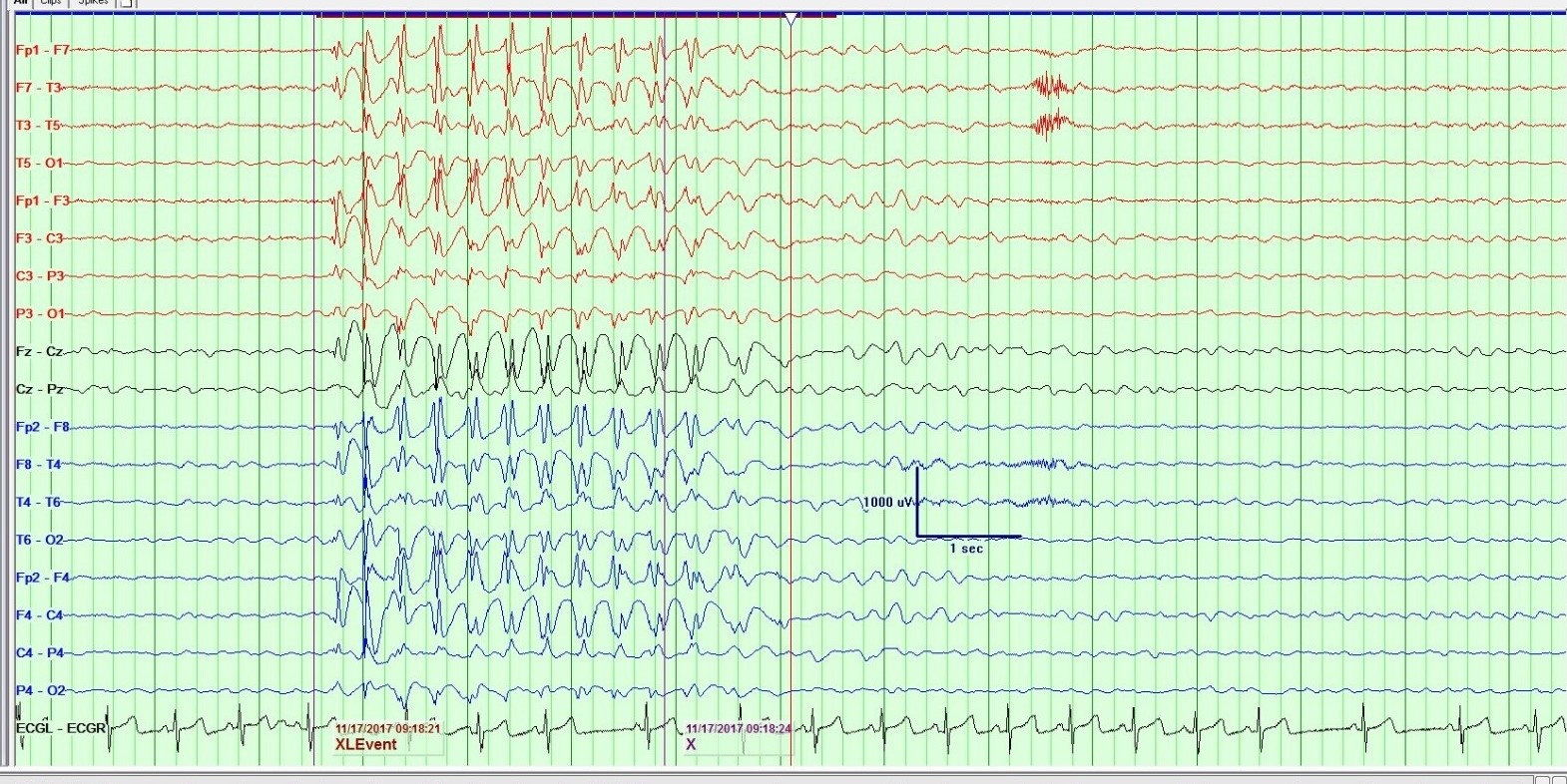What electroencephalogram hides. Case report.
Main Article Content
Abstract
Background: 10-14% of children under six years have language delay, making it a frequent reason for consultation in Primary Care. The differential diagnosis is broad and should include epilepsy. Case report: 3-year-old patient referred to neuropediatric due to a significant maturational delay with marked language impairment. The mother denied the presence of seizures and absence of hearing loss. The neurological examination was normal, except for a few spontaneous speeches. Electroencephalogram (EEG) was performed with sleep deprivation, where generalized discharges of wave-point complexes were shown at three cycles per second, coinciding with episodes of disconnection from the environment, staring, and, on some occasions, oral automatisms. Given these findings, treatment with valproic acid was instituted, with the subsequent disappearance of the elements of epileptiform nature and good evolution in language. Conclusions: language delay can be a challenge for the pediatrician due to the broad differential diagnosis, always having to rule out childhood absence epilepsy. Early diagnosis and adequate treatment avoid the onset of a crisis and improve the evolution of these patients.
Downloads
Article Details

This work is licensed under a Creative Commons Attribution-NonCommercial-NoDerivatives 4.0 International License.
Creative Commons
License Attribution-NonCommercial-ShareAlike 4.0 International (CC BY-NC-SA 4.0)
You are free to:
Share - copy and redistribute the material in any medium or format.
Adapt - remix, transform, and build upon the material The licensor cannot revoke these freedoms as long as you follow the license terms.
• Attribution — You must give appropriate credit, provide a link to the license, and indicate if changes were made. You may do so in any reasonable manner, but not in any way that suggests the licensor endorses you or your use.
• NonCommercial — You may not use the material for commercial purposes.
• ShareAlike — If you remix, transform, or build upon the material, you must distribute your contributions under the same license as the original.
• No additional restrictions — You may not apply legal terms or technological measures that legally restrict others from doing anything the license permits.
References
Aguilera Albesa S, Busto Crespo O. Trastornos del lenguaje. Pediatr Integral.
;16: 683-690.
Narbona J, Chevrie-Muller C. El lenguaje del niño. Desarrollo normal,
evaluación y trastornos. 2ª edición. Barcelona: Masson; 2001.
Rodríguez Barrionuevo AC, Bauzano Poley E, Rodríguez Vives MA. Epilepsias
en el niño entre uno y doce años: epilepsia con ausencias infantiles. Madrid:
Ergon; 2003.
Martínez Ferrández C, Martínez Salcedo E, Casas Fernández C, Alarcón Martínez H, Ibáñez Micó S, Domingo Jiménez R. Epilepsia ausencia infantil. Pronóstico a largo plazo. Neurología. 2019; 34:224-228. DOI: https://doi.org/10.1016/j.nrl.2016.12.005





